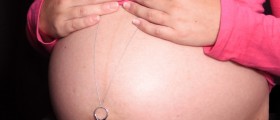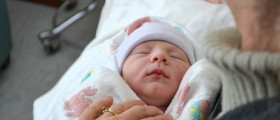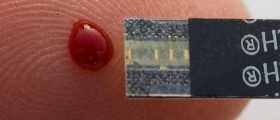
Diabetes in Pregnancy
High level of blood sugar should be kept undercontrol at all times, but for women expecting the baby this condition is evenmore serious. Whether they are already suffering from diabetes type 1 or type 2,or from gestational diabetes, developed in pregnancy, they must take care oftheir blood glucose level. Doctors recommend strict diet, regular physicalactivity and medical attention to all pregnant women experiencing some diabetesproblems. All irregularities with the amount of blood sugar during thepregnancy may have serious impact to the unborn child and therefore theseconditions should be properly managed, with the help of the doctors.
Gestational Diabetes Complications
Any unborn baby whose mother suffers from gestational orsome other type of diabetes is under risk to develop some congenital birthdefects. In some case fetal death may also be caused by gestational diabetes.
Ketoacidosis is one of the most severe complications thatmight be caused by diabetes. Mothers suffering from this condition experienceincrease of blood acidity which affects the child as well. Child’s enzymes can’tfunction properly in this highly acidic environment and there is an increase of50% in fetal death rates caused specifically by this condition.
Congenital birth defects are also frequent in children whosemothers are diabetic, especially if there were some high levels of glucose inthe early days of the pregnancy. Growing fetus may experience many problemsbecause of high blood sugar, including some heart and central nervous systemproblems. Skeletal system of the unborn child may also suffer from poorly manageddiabetes of the mother. Fetal heart defects that may arise due to gestational diabetesare: septal defects, transposition of the great vessels and coarctation of aorta. Other problems can include:hydrocephalus, ancephaly, meningomyelocele or sacral agenesis.
Macrosomia or reverse of macrosomia (intrauterine growthrestriction or IUGR) can also be medical conditions of the unborn baby caused bymom’s diabetes. Babies can either be too large (in macrosomia) or too small (inIUGR) for their gestational age. Macrosomic babies can’t be delivered vaginallybut with c-section procedure, because of the size of the baby.
There are some other problems that may occur in babiescarried by diabetic mothers including: respiratory distress syndrome orpolycythemia. Babies suffering from respiratory distress syndrome suffer fromlack of surfactant on their lungs. Surfactant is coating the lungs, enabling the breathing in newbornbabies, but in this case some enzymes needed for itsproduction are inhibited and it can’t be produced. Polycythemia is thecondition characterized by overproduction of red blood cells and the inabilityof the baby’s liver to metabolize bilirubin.

















Your thoughts on this
Loading...